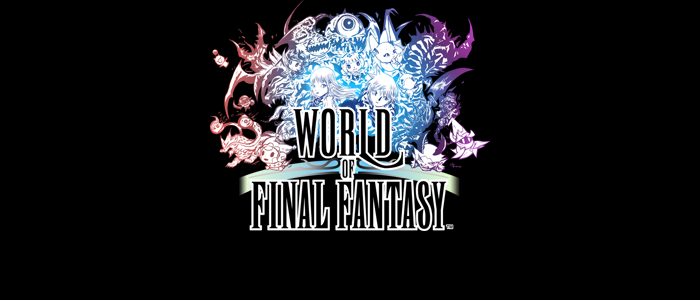- Genre: JRPG
- Platform: PS4
- Also Available On: Vita
Given the month and year we’re currently in, you’d expect that the monster capture RPG that everyone wants to play is Pokemon Sun/Moon. However, Square-Enix decided to launch World of Final Fantasy anyway, so here we are. WoFF is decidedly a monster capture RPG at its core, but with characters and a story that blend a large number of past FF games, and a battle system pulled straight out of the SNES and PS1 entries in the series. Overall, while it may not end up being the best monster capture title this year, it certainly is worth playing for any serious JRPG fans.
WoFF takes place in the world of Grymoire, where pretty much everyone but the two main characters are little chibi folks. The story is your usual overpowered bad dude taking over the world nonsense, but it generally works and provides enough of a reason to move forward. The even better reason to move forward for FF fans are the constant cameos from past FF stars. The cameos run the gamut from FF 1 through 13, and tend to hit all the big protagonists, including the return of the voice actors for the titles that had voice acting. If you’re a fan of the series at all, you’ll get a kick out of the constant barrage of recognizable faces as you get to new areas. It’s a fun time throughout, and ends up working out well enough to provide an entertaining backdrop to the core gameplay.
The setting also provides the depth of FF monsters for you to capture. You’ll be grabbing everything from Chocobos to Cactuars to Tonberries on the low end, all the way up to recognizable summons like Ifrit, Bahamut, and Diabolos at the high end. The wide range of sizes and styles all feeds back into the way that you build out your team, providing both the fun of capturing all the things you’ve fought in the past, as well as a huge amount of depth to building out teams that mask each other’s weaknesses while boosting their strengths.
That said, the battle system is the real star here. The core of it is the instantly recognizable Active Time Battle system from the FF4-FF9 games, and it essentially remains the same. What is different here is how the party is built out. The general idea is that each of the two main characters exists in a stack consisting of a small, medium, and large NPC. Because the main guys can be normal human form or chibi form, they can fill the large or small slot. The rest of the slots are then filled out by the monsters you capture. This stack then combines its stats, strengths, weaknesses, and abilities to form the unified character stack that takes its turn in battle.
What this ends up doing is providing a pretty large meta game to how you build out your party. While you may want some fire attacks, this would expose the stack to a weakness against water. To combat this, you can then also place a character strong against water, eliminating that elemental weakness, and providing an overall better prepared stack. On the other hand, you can combine the stack with another fire user to really increase the strength fire resistance, as well as providing boosts to the strength of fire attacks used by the stack. This mix and match continues throughout the game, to the point where I would typically have entire new rosters each time I entered a new area.
The other nice system that came in from other FF games is the way that the monsters you capture gain ability and stat increases. Beyond just gaining flat stats through leveling, every species has a grid-based upgrade system very reminiscent of the Sphere Grid system from Final Fantasy X. Some upgrades in this system are flat stats as well, but by and large you use the system to gain active and passive ability upgrades. The system also is used to unlock the evolutions of monsters, where the upgrades earned from one variant of a species carry over as you evolve into another variant. Of note, the monsters can evolve up and down to any variant of a species that you have access to at any time, so there’s never the question of whether or not it’s worth evolving a monster. You just change it to what is most useful at the time.
Overall this was a really solid JRPG to be playing, especially in the lead up to the Pokemon series’ next entry. It certainly wasn’t immune to problems; the end game in particular got really grindy. However, it showed that there’s still a lot of life in the FF series, while still allowing for them to branch out into other interesting gameplay types that aren’t just the core series. While FF15 is going to be an incredibly different game from this one, WoFF also gives me hope that Square is giving their Final Fantasy teams all the resources needed to pull off incredibly high quality games, with the time needed to make sure they are in the right place to succeed.


